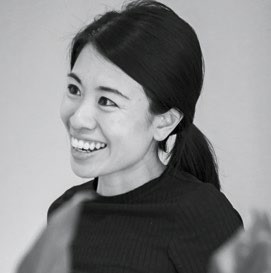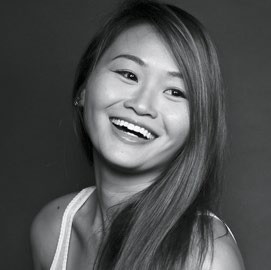They’re locally made, by hand, in small batches.


They’re locally made, by hand, in small batches. No state-of-the-art labs, massive R&D teams or big-bang advertising. Yet, these homegrown beauty labels are flourishing. We speak to five brands about their success.
Those of you who still think of local handmade beauty products as the stuff of craft markets and home kitchen stoves haven’t been paying attention.
Over the past several years, artisanal brands have gone from cottage industry to thriving segment of the beauty business – a feat that’s all the more impressive when you consider how crowded the market is already.
Much of it can be chalked up to the rise of clean beauty and sustainable living. Consumers are more health- and eco-conscious now, seeking out products that reflect their own values. And clean, green products are perfectly placed to cater to this need.
Hildra Gwee, who launched plant-based Oasis Skin in 2018, says the majority of her customers are females from 18 to 35 years old, who are curious about green and zero-waste beauty.
“I believe that this generation is wellconnected to global trends. They’re increasingly informed about how to read cosmetic labels to avoid chemicals. There is also a growing number who are looking at package-free and organic products as they are committed to having a positive impact on the environment,” says the former bank relationship manager, who quit her job at the end of last year to focus on her label.
Rough Beauty, a botanical bath and body care outfit launched in 2014, draws a similar crowd. According to founder Chew Jia Tian, a former nurse at Khoo Teck Puat Hospital, her customers range from people with skin sensitivities to those who are informed about sustainability. And now, corporate types and companies too.
“In the beginning, our customers were people who visited craft markets and were curious about our locally made soaps. Now, we work with more businesses, making customised products for them,” she says.
It certainly helps to have a growing consumer base that’s savvy about ingredients. Winona Tan, an ex-IT company executive who started ethical skincare brand Want in 2016, says her ingredients are foods that are good for the body and skin as they are packed with essential fatty acids, antioxidants and vitamins.
She says: “Small-batch, handmade products are preferred as consumers are learning more about chemicals and preservatives used in skincare. There is going to be a much higher demand for chemical-free options.” Not only are Want’s products free of chemicals, synthetic ingredients and even water (to reduce the carbon footprint), its ingredients are fair trade and sustainably sourced. The brand also contributes funds to women’s cooperatives in Bali and Benin.
“Giving back has been instilled in me since young, so it all came about very naturally. I’m fascinated by how things are made and where they come from, so I watch a lot of trade documentaries to learn more about the production journey. And I found out that most farmers are being exploited by big organisations,” says Tan.
Kendra Liew, a former lawyer and founder of organic brand Katfood, feels that what’s on our skin should be safe enough to put in our mouths, since skin absorbs up to 60 per cent of what is applied. That prompted her to start her label in 2014, which lays claim to being Singapore’s first boutique food-based skin and haircare range.
“The beauty of natural skincare is that it makes use of ingredients that everyone is familiar with and even use in our kitchens, giving us a safe space to experiment with,” she says.
IT’S PERSONAL
A flooded beauty market may seem like a tough place for home-grown, small-batch labels to survive, but it also works in their favour. With all the exposure to cult/indie brands from around the globe, consumers are now more open to giving local niche brands a shot. And faced with a glut of options, some are gravitating towards no-fuss, all-natural products that address their needs, and are made by women they can relate to.
Oasis, for instance, stemmed from Gwee’s desire to fi nd a cure for her acne problems, which she had been struggling with since her teens. Want came about when Tan – a lifelong skincare junkie – found that she was spending too much money on products with chemicals her skin didn’t need.
For former graphic designer Teresa Foo, her vegan skincare and bodycare brand Balm Kitchen was born of sheer necessity. Back then, she was looking for a natural product that could soothe her three-year-old son’s atopic dermatitis. “I wanted to avoid synthetic medical creams like steroids, as they thinned his skin and didn’t address the problem,” she explains.
The first product she whipped up was a natural body balm made with a few simple ingredients – sweet almond oil, coconut oil, cocoa butter, vitamin E and candelilla wax. When that worked in treating her son’s eczema, she decided to learn more about the science behind them.
She says: “I studied with an online accredited organic skincare school in the UK – Formula Botanica – and was also part of its teaching team for a year. With my Diploma in Organic Skincare Formulation, Advanced Diploma in Organic Cosmetic Science and other skincare certificates, I was able to create more products.”
Foo is hardly alone in attaining her formulating chops through the Internet. To create Rough Beauty’s soaps, Chew went online to learn how to make them from scratch. The same goes for Liew, who picked up basic techniques online before experimenting to see which ingredients work best together to achieve the desired effects.
Gwee says she started concocting different beauty oils by consulting books and countless websites. “I am self-taught and motivated by my sheer interest in the healing powers of plants. There is a lot of free academic research and laboratory test results published online, you just have to look deeper to find them. A lot of the recipes I have used in my formulas are based on these research papers, which show how organic, natural and botanical ingredients can be synergised to care for troubled skin,” she says.
Product testing is usually carried out by brand founders on themselves, their family and friends, as well as loyal customers. Foo says: “We send out many samples to our existing customers – they are the best testers – and close friends. Once we have a general consensus on a formulation’s efficacy, and after a lot of finetuning, it will be made into an actual product.”
Often, founders put their own skin on the line. Tan says she once had a skin allergy reaction when she accidentally spilt undiluted essential oil on herself. “ That was a big lesson learnt about careful dilution. That’s why I make sure I research a lot on different recipes, try them out and tweak them till perfection,” she adds.
Gwee, too, saw her skin go through a roller coaster of ups and downs. “The very first blend I did – based on a well-recommended book – inflamed my skin because of the sheer number of oils in the recipe. I took several days to recover from the incident. But I persevered and learnt to simplify the formulas before finally coming up the my go-to beauty oil – the Instaglow,” she says.
THE SMALL-BATCH INDUSTRY IS GETTING BIGGER
The past few years have seen these brands register healthy growth in various ways.
“We started out making simple lip balms and body balms. Now, five years on, we have skincare, bodycare, baby care and custom formulations. We are also providing ODM and OEM services to corporate clients,” says Foo. “The artisanal beauty industry is no longer the ‘made in my kitchen’ cottage industry of the past. Brands like Balm Kitchen are using trending and exotic ingredients in products, and making them with knowledge of cosmetic science. Some have even adopted innovative technologies such as ingredient encapsulations,” she adds.
Liew, whose Katfood products are now stocked at Watsons and available on Amazon, feels the only way for the industry to go is up. She says: “When I started in 2014, you could count the number of independent Singaporean beauty brands on one hand. Today, there are so many more options available to consumers.”
She insists, however, that her brand will continue to stick to its guns. “I think it’s really important that our products continue be made by hand. It’s what sets us apart from the big brands. Even as we aspire to the big leagues, we must not lose our identity. We are committed to expanding our facilities and team size – instead of small batches, we’ll make big batches by hand!”
Others express similarly strong convictions about maintaining their brand’s DNA. “Rough Beauty has been growing slowly and organically. While sticking to our practices may not allow us to grow quickly, we feel it is important to adhere to our principles of simplicity and sustainability,” says Chew.
Tan believes the reason Want has taken off is because there is a clear vision of what it represents. “Want is about ethical skincare and this will always be the core of the brand,” she says.

1 Katman Manly Beard Oil, $32.90
2 Katfood All About That Face Foaming Facial Wash, $32.90
3 Katfood Matcha Made In Heaven Brightening Mask, $32.90
4 Katfood Hands Down The Best Salve, $16.90
5 Katfood Aventurine Lip Tonic, $29.90
6 Oasis Skin Mask Brush (part of Mask Essential Kit), $65
7 & 8 Oasis Skin Organic Turmeric and Organic Ash Solid Shampoos, from $10 each
9 Want Acai Moringa Coco Cleanser, $49
10 Want Ginger Clay Scrub Mask, $49
11 Want The Face Oil, $69
12 Want The Body Oil, $39
13 Want Beet This Honey Cleanser, $30
14 Oasis Skin Brighten Antiageing Clay Mask, $31
15 Oasis Skin Solid Conditioner, from $10
16 Savonnerie Fer A Cheval Marseille Soap Cube at Oasis Skin, from $10
17 Balm Kitchen Awakening Skin Tonic, $58
18 Balm Kitchen Fruity Gelly Wash, $60
19 Balm Kitchen Super Fruit Defense Anti-pollution Facial Oil Serum, $24
20 Rough Beauty Mint Rose Hand & Body Wash, from $17
21 & 22 Rough Beauty Mint Rose and Geranium Scruffy Cleansing Grains, $14.90 each
23-25 Rough Beauty Saffy Fields Soap, Orange Bar, and Mint Rose Soap, $9.50 each
26 Rough Beauty Calm Moisturising Oil, $15





PHOTO OF HILDRA GWEE JANICE TAN
























